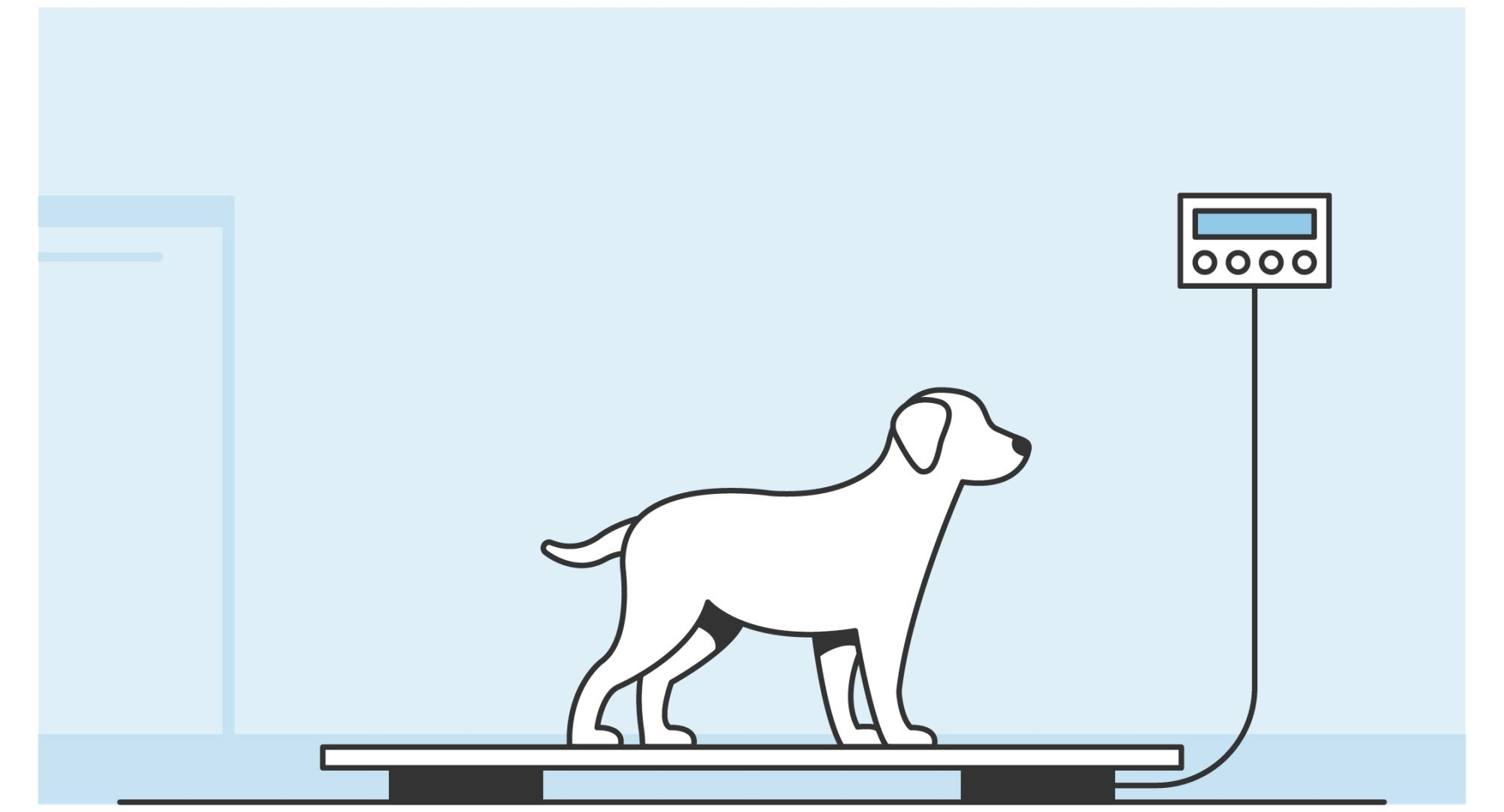How heavy should my dog be - dog body condition score
Article

It's important to know what a healthy body weight looks like for your dog from a young age. It's easy to check at home while you are petting your dog, and using a body condition score will help you identify early warning signs of weight gain or loss. This can make it easier for you to act in partnership with your veterinarian and help your dog achieve and maintain a healthy weight.

How to use a body condition score
Assessing your dog's body condition score
Step 1 - Look
Step 2 - Feel
Step 3 - Weigh
Dog body condition score 1 - 9
A dog body condition scale ranges from 1 to 9, with 1 indicating a dog is severely underweight, to 9 meaning severely obese. A dog is considered to have an ideal body condition if they score between 4 and 5. Assessing your dog's body condition score is easy to do and can be carried out when petting your dog.
Underweight dog - body condition score 1 - 3
Score 1: Severely underweight
What to look for
- Ribs, pelvis and other bones are severely evident from a distance
- No recognizable body fat
Score 2: Underweight
What to look for
- Ribs, pelvis and other bones are evident from a distance
- No visible body fat
Score 3: Too thin
What to look for
- Ribs can easily be felt and may be visible with no noticeable fat
- The lower spine is visible and pelvic bones are prominent
- Obvious waist and abdominal tuck when viewed from the side
Why is my dog underweight?
Ideal dog weight - body condition score 4 - 5
Score 4: Ideal
What to look for
- Ribs can easily be felt with minimal fat
- The waist is visible when viewed from above
- Abdominal tuck is clearly visible when viewed from the side
Score 5: Ideal
What to look for
- Ribs can easily be felt without excess fat
- The waist can clearly be seen when viewed from above
- Abdominal tuck is visible when viewed from the side
My dog is a healthy weight
It's great news if your dog is already an ideal and healthy weight, but you should still maintain healthy feeding habits. Make sure you continue to feed your dog the correct portion sizes, avoid giving them too many treats and ensure they receive daily exercise as recommended by your veterinarian. Keeping on top of these factors will help your dog's weight remain stable.
As your dog ages remember that feeding and exercise habits will need to be adapted. Regular check-ups with your veterinarian will provide opportunities to discuss changes to your dog's diet and how their activity levels should be altered.
Overweight dog - body condition score 6 - 9
Score 6: Above ideal
What to look for
- Ribs can be felt with only a slight excess of fat
- The waist is apparent when viewed from above but is not prominent
- Abdominal tuck is visible when viewed from the side
Score 7: Overweight
What to look for
- Ribs palpable with difficulty, heavy fat cover
- Noticeable fat around the lower back area and base of the tail
- The waist is absent or barely visible
- Abdominal tuck may be absent when viewed from the side
Score 8: Obese
What to look for
- Ribs cannot be felt under very heavy fat cover or may only be identified with significant pressure
- Heavy fat around the lower back area and base of the tail
- No visible waist
- No abdominal tuck when viewed from the side
- Obvious abdominal swelling may be present
Score 9: Severely obese
What to look for
- Excessive fat between the neck and the abdomen, spine, and base of the tail
- Waist and abdominal tuck is absent when viewed from the side
- Fat around the neck and limbs
- Obvious abdominal swelling
- Ribs cannot be felt under very heavy fat cover
Is my dog overweight?
Still unsure about your dog's ideal weight?
Related articles
Like & share this page